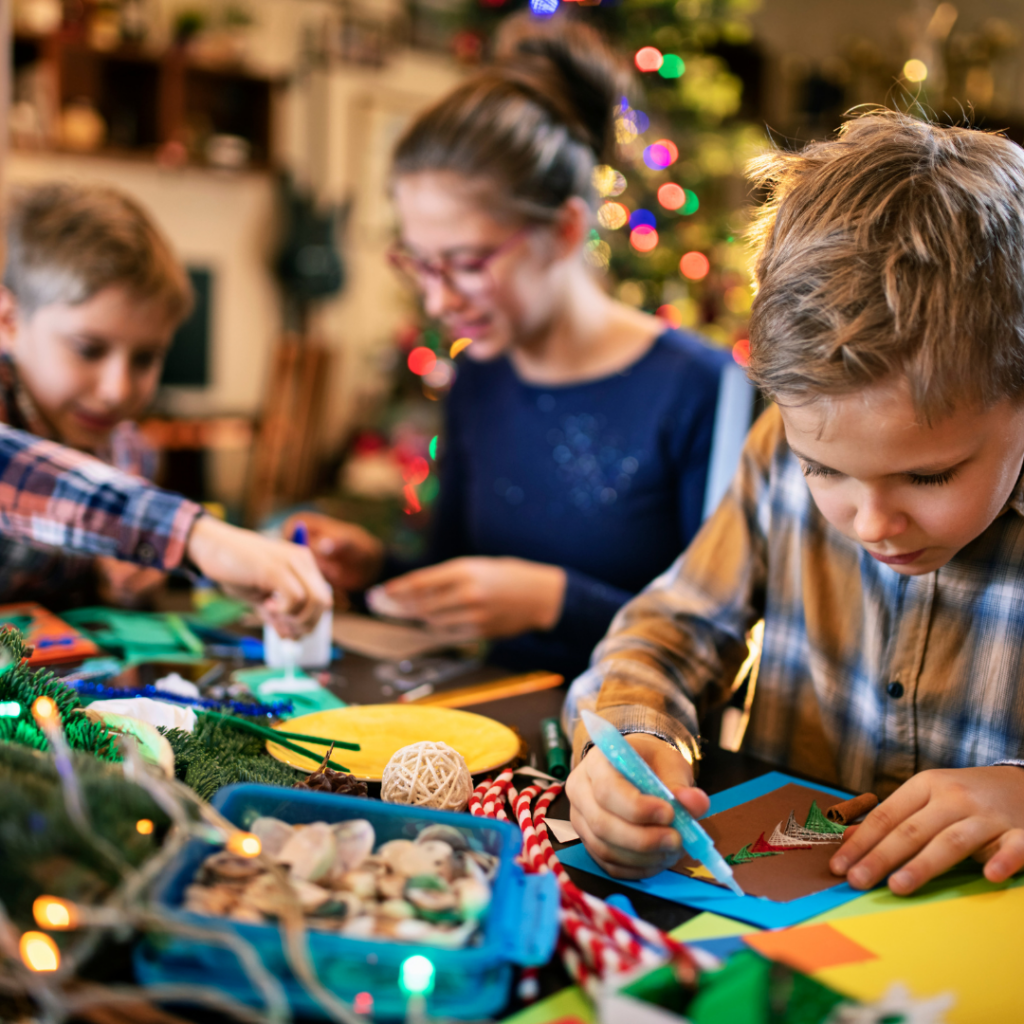Avoid These Holiday Eye Hazards
Don't let holiday eye hazards catch you by surprise! Know what to do if you injure your eyes.
Glitter on pine cones and tinsel on trees; bright snowy hillsides and dry autumn leaves — eye hazards aren’t always easy to spot, but this winter you’ll find them, ready or not. Don’t let holiday eye hazards catch you by surprise! Know what to do if you injure your eyes.
Holiday craft projects gone wrong: What happens if you get glue or glitter in the eye?
In some households, the holidays don’t officially begin until someone’s fingertips are crusted with glitter and glue. If this is your house, wash everyone’s hands thoroughly after crafting to avoid getting glitter in the eyes. Glitter can mix with the tear film and cause irritation. At worst, it can scratch the cornea and even cause an infection.

Don’t rub your eyes or use your fingers to remove the glitter. You might accidentally scrape the glitter against your eye and scratch your cornea. Instead, try using artificial tears, sterile eyewash or a saline solution to flush the glitter out of your eye. If that doesn’t work, you’ll need to be seen by a doctor. Consider switching to glasses from contact lenses until the glitter is gone.
Glue and other adhesives can irritate the eye and cause an infection, as well as make the eyelashes stick together. If you get glue in your eye, flush the eye with lukewarm water under the sink or shower for several minutes. Call your doctor if you have lingering pain, discharge or redness.
Watch children (and yourself!) around other craft supplies, too. The sharp ends of pipe cleaners, for example, can scratch the eye.
What to do if you’re poked in the eye with a tree branch or pine needle
Winter wonderlands are festive and bright — but those heaps of faux snow can hide the darker side of tree decoration: Pine needles can poke your eyes as you reach in to hang an ornament and tree branches can snap back and hit your face.
If you scrape your eye during a close encounter with a Christmas tree, check out our guide to caring for eye scratches. While some eye scratches heal by themselves, an eye exam can determine if the injury is more serious than it seems. It’s best not to take chances, as a corneal abrasion can cause lasting damage to your vision.

If your eye has been cut or punctured, seek emergency care right away. A blow to the eye from a tree branch, for example, could damage the eye’s internal structure and cause conditions as serious as glaucoma or retinal detachment.
While you’re waiting for help, DO NOT rinse the eye or try to remove an embedded object. Gently cover your eye with a protective cover, such as the bottom of a paper cup, without applying pressure. Get to a doctor as soon as possible.
Never throw baking flour at someone’s face! Flour in the eyes is painful and dangerous
Kitchen projects can turn disastrous when clouds of flour, spattering grease or splashing broths end up in the eyes. If flour dust enters your eyes, flush them thoroughly with cool water or a saline solution. Call your doctor right away if you develop any hints of infection, such as discharge or pain.
Many kitchen eye injuries can be cared for at home. But get urgent care from an ophthalmologist (rather than waiting until after the holidays) if you experience lasting pain, redness, blurry vision, tearing or a lingering sensation that something is in your eye.
Snowblindness and sunburned eyes
Did you know that your eyes can get sunburned in the winter? Bright sunlight reflecting off of snow, ice or water can burn your eyes, cause a painful condition called snow blindness, or photokeratitis. It can happen quickly — and by the time you experience pain or blurry vision, the damage has already been done. Snow blindness often heals on its own in a few days, but prolonged winter sun exposure can raise your risk of cataracts and growths on the eye, including cancer. Severe UV exposure can even damage your retina, causing permanent vision loss.
Whether you’re sledding down a hill in your backyard or skiing down a mountain, it’s important to wear wrap-around snow goggles or sunglasses that block at least 99% of UV rays.
Watch out! Champagne corks can hit your eye at 50 mph
Look around at any holiday gathering, and you’re likely to spot at least one reveler directing a champagne cork at themselves or onlookers. This is a big mistake: Corks exit the bottle at speeds of around 50 mph – and if it’s fast enough to shatter glass, imagine what that might do to your eye. The news is full of reports about celebrities and regular people who experienced bleeding, abrasions, glaucoma and permanent vision loss after a cork accident.
If you get hit in the eye with a Champagne cork, there’s no way around it: You’ll need urgent care from an ophthalmologist – a physician that specializes in medical and surgical eye care. Not only should you be seen at the time of an injury, but you may need long-term care to prevent permanent vision loss.
Impress your friends and protect bystanders by using the proper technique for popping a Champagne cork: rotate the cage tab six half-turns, hold the bottle at a 45 degree angle and press down on the cork while firmly twisting the bottle. Make sure your family and friends know the dangers of breaking protocol.
Source: American Academy of Opthalmology